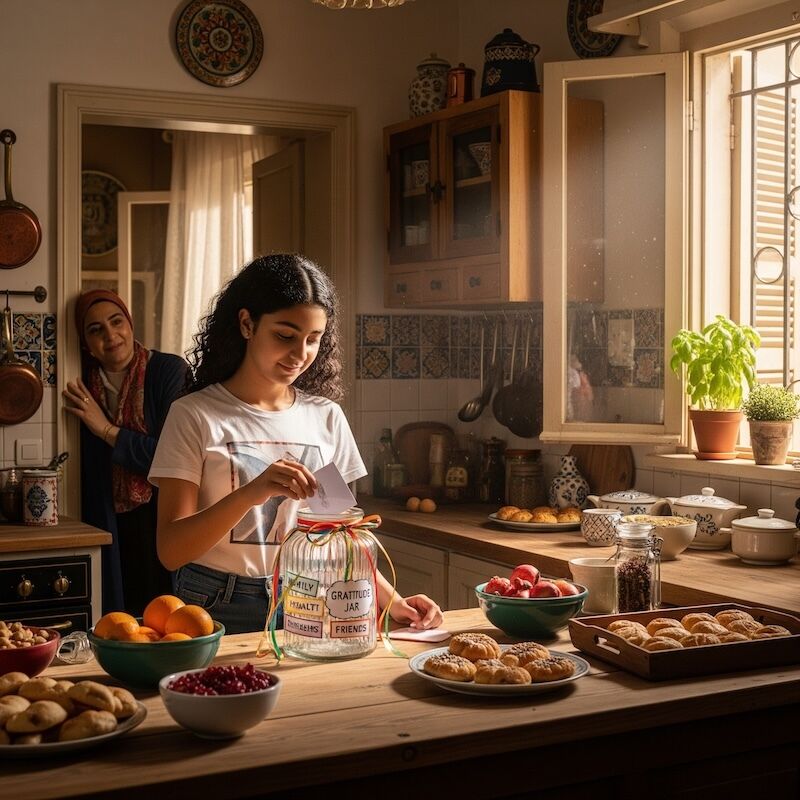Let’s be honest: hearing a teen say “Thanks, Mom” without a side-eye or a sigh can feel like spotting a unicorn. But new research shared in Psychology Today (July 2025) suggests that with just a little effort, teens can learn genuine gratitude—and that practice pays off in powerful ways.
The key? Active expression, not passive feeling.
The study found that teens who regularly write, say, or reflect aloud on things they’re grateful for experience lower levels of entitlement, improved empathy, stronger family bonds, and even better academic motivation. Gratitude journaling, verbal “thank yous,” and small acts of appreciation have measurable emotional benefits.
That’s not fluff—it’s emotional scaffolding.
Here in Egypt, where many households lean on respect-through-obedience, this insight opens a new door. Gratitude isn’t just good manners—it’s mental training. It teaches teens to step outside themselves, recognize others’ efforts, and make meaning from the everyday.
So how do we encourage it?
1. Make gratitude a habit. At dinner, ask: “What’s something good from today?” Start small. One sentence is enough.
2. Use visual tools. Keep a Gratitude Jar where every family member adds a note. Empty it monthly together and reread.
3. Reflect effort, not outcomes. When they help—even imperfectly—say “Thank you for trying” before correcting.
4. Model it constantly. Let them overhear you thank the delivery guy, the teacher, or them. It sticks more than lectures.
5. Use hard moments. After a tantrum or rough day, ask, “Even today—was there something good?” This isn’t toxic positivity. It’s emotional anchoring.
Gratitude is linked to higher resilience and lower risk of anxiety and depression in teens. Why? Because it shifts their focus from what’s missing to what’s meaningful. In a culture flooded with comparison—from grades to gadgets—this redirection matters.
Let’s also be real: you’ll get pushback. Eye-rolls, sarcasm, even refusal. That’s fine. Keep going. This isn’t about compliance—it’s about pattern-building. Gratitude is a muscle, and most teens are still figuring out how to lift with it.
So start light. One thank-you. One question. One family ritual. Over time, the tone shifts. The posture changes. And the moments where they mean it—they’ll come.
Because gratitude isn’t just about what they say. It’s about who they’re becoming.







Leave a Reply
You must be logged in to post a comment.